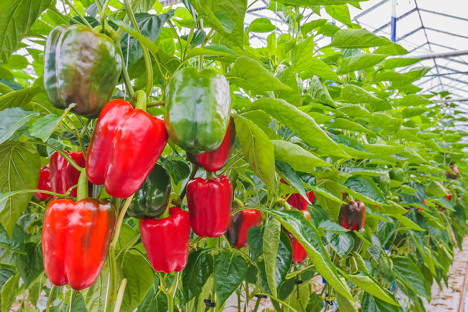Increased production in winter without detracting from the flavor and quality of tomatoes. Looye Kwekers, a tomato grower from the Netherlands, is using that as a starting point to transition to LED lighting this summer. Due to the current high energy prices, it has decided to equip all greenhouses with Philips GreenPower LED immediately. Signify will install a hybrid set-up in the greenhouses, covering a total area of almost 25 hectares and providing a lot of light and significant energy savings.
Looye Kwekers greenhouses in Naaldwijk and Burgerveen are currently fully equipped with HPS lighting, helping them achieve light levels of up to 225 µmol per square meter. The integration of LED will result in that figure being revised upwards, to over 300 µmol per square meter, depending on location. By the end of the summer, half of the lights will be replaced with LED. “This will raise the light levels in the greenhouses by 30 to 40%,” says director Annelies Looije. “We expect our production during the winter months to increase by the same amount. In summer, when there is more natural light, the difference compared to the current set-up won’t be as high.”

Retaining the taste
You can do two things as a grower to cultivate more tomatoes in winter: expand the cultivation surface or raise the output from the existing greenhouses. Looye Kwekers chooses the second option and aims for higher efficiency. “That’s how we landed on LED,” Annelies Looije explains. “LED provides more light in the greenhouse, making the plants produce more tomatoes. It’s a proven method to increase production. We have known that for a while, but retaining the taste is an important condition for us. Our partner and contract grower installed LED last autumn, and since then we’ve been certain that the taste is just as good.”
Using the existing infrastructure
Looye Kwekers chooses the Philips GreenPower LED toplighting force, the ultimate LED grow light for light-loving crops. “With this investment we have chosen a light that can be integrated easily into the existing infrastructure. We will remove half of the HPS lights and replace them with LED. We will alternate, like a checkerboard, to divide the light evenly. Thanks to the addition of green light to the spectrum, our employees in the greenhouse can see the tomatoes well during harvest with just the LED lights on, and our cultivation specialists can still evaluate the crop.”

Annelies Looije believes that LED lighting is the future for tomato cultivation. However, in her opinion, a full transition still requires additional research. “We grow flavorsome tomatoes, so the taste is by far the most important quality for us. Heat plays a role in that. One of the advantages of HPS lighting is that they emit some heat as well. That is why we have chosen a hybrid set-up in order to guarantee the great flavor of our tomatoes.”
Growing tomatoes with less energy
Alongside increased production, Looye Kwekers also benefits from significant energy savings with this investment, which is an important consideration given the current energy prices. That is why the company has decided to equip all their greenhouses with LED as soon as possible. Three sites are involved: one in Naaldwijk of 6.5 hectares and two in Burgerveen totaling 18 hectares. “Sustainability is high on our agenda,” Annelies Looije says. “Just like our customers, we think it is important to make less of an impact on the planet. That is why we have a geothermal connection in Naaldwijk which we are currently expanding.”

“The investment in LED is an important step to growing tomatoes with less energy,” Annelies continues. “Signify is a reliable partner for us in that. Their technology is sturdy and reliable. It has proven itself in many areas.” This has been a multi-year partnership between Signify and Looye Kwekers. Trials have been conducted together to investigate the influence of LED on the taste of tomatoes. “By now, we are convinced that we can deliver the same quality of tasty tomatoes with this LED hybrid configuration.” Hortipar will carry out the installation this autumn, with which Looye Kwekers can generate 40% more light during the coming winter.

Dutch horticulture has been the poster child of global innovation in a...

Agricultural researchers from the UPCT have created a portable prototy...
Increased production in winter without detracting from the flavor and ...